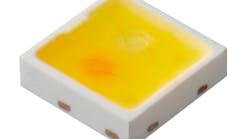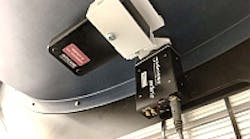“ASSIST recommends: LED Life for General Lighting” proposes a definition for the life of LED products for lighting, based on light output depreciation and appropriate light levels for different types of lighting applications. The group recommends 70 percent lumen maintenance (i.e. a 30 percent reduction in light output over time) as the useful life for general lighting applications; and 50 percent lumen maintenance for decorative lighting applications.
Because LEDs rarely fail catastrophically, “ASSIST recommends” uses the term “useful life” in its life definition. The end of useful life indicates when the light output from the LED product has decreased to a point where it becomes unacceptable for the lighting application.
“The purpose of ‘ASSIST recommends’ is to help manufacturers present information to end users in a consistent manner,” said Dr N Narendran, director of research and head of the solid-state lighting program at the LRC. The information and recommendations presented in “ASSIST recommends” are based upon LED life tests conducted at the LRC and information found in literature regarding noticeable light level changes. In addition, the LRC gathered input from leading LED manufacturers and the traditional lighting community while preparing these recommendations.
The publication also provides methods for measuring and extrapolating data to estimate the life, in hours, of an LED component and an LED-based system, as well as sample data sheets for how companies should record and present life information for their products. Because LED fixture life can vary depending on its packaging, the “ASSIST recommends” publication calls on both LED component manufacturers and fixture/system manufacturers to test and provide life information for their LED products.
“The LED and lighting industries have not set a standard for LED life at this point,” said Dr Narendran. “We hope ASSIST’s recommendations will further the current dialogue on this issue and offer a starting point for standards-setting bodies.”
A free download of “ASSIST recommends: LED Life for General Lighting” is available on the LRC Web site at www.lrc.rpi.edu/programs/solidstate/assist/recommends.asp.
About ASSIST
The Alliance for Solid-State Illumination Systems and Technologies (ASSIST) is a program developed by the Lighting Research Center to advance the effective use of energy-efficient solid-state lighting technologies. ASSIST is a collaboration between researchers, manufacturers, utilities, and government organizations. Its goal is to identify and reduce major technical hurdles and help LED technology gain widespread use in lighting applications that can significantly benefit from this rapidly advancing light source technology. On behalf of ASSIST, the LRC conducts research, demonstration and evaluation, and educational activities. Beyond technical research, ASSIST has been active in fostering discussions between traditional luminaire manufacturers and LED manufacturers.
ASSIST sponsors include Boeing, GELcore, New York State Energy Research and Development Authority, Nichia America Corporation, OSRAM SYLVANIA/OSRAM Opto Semiconductors, Philips Lighting, and the U.S. Environmental Protection Agency.




